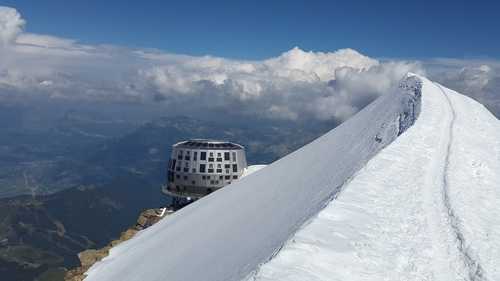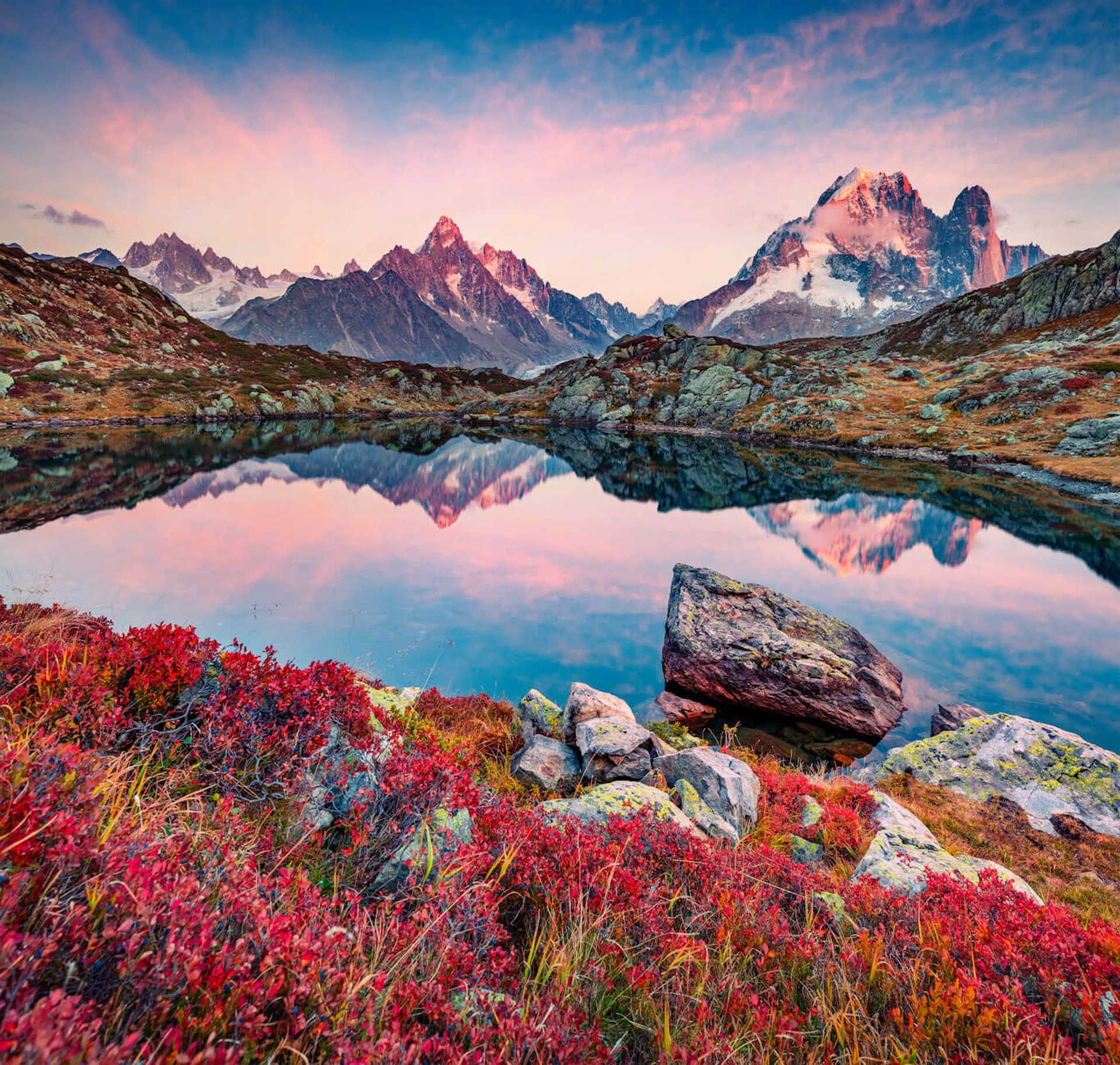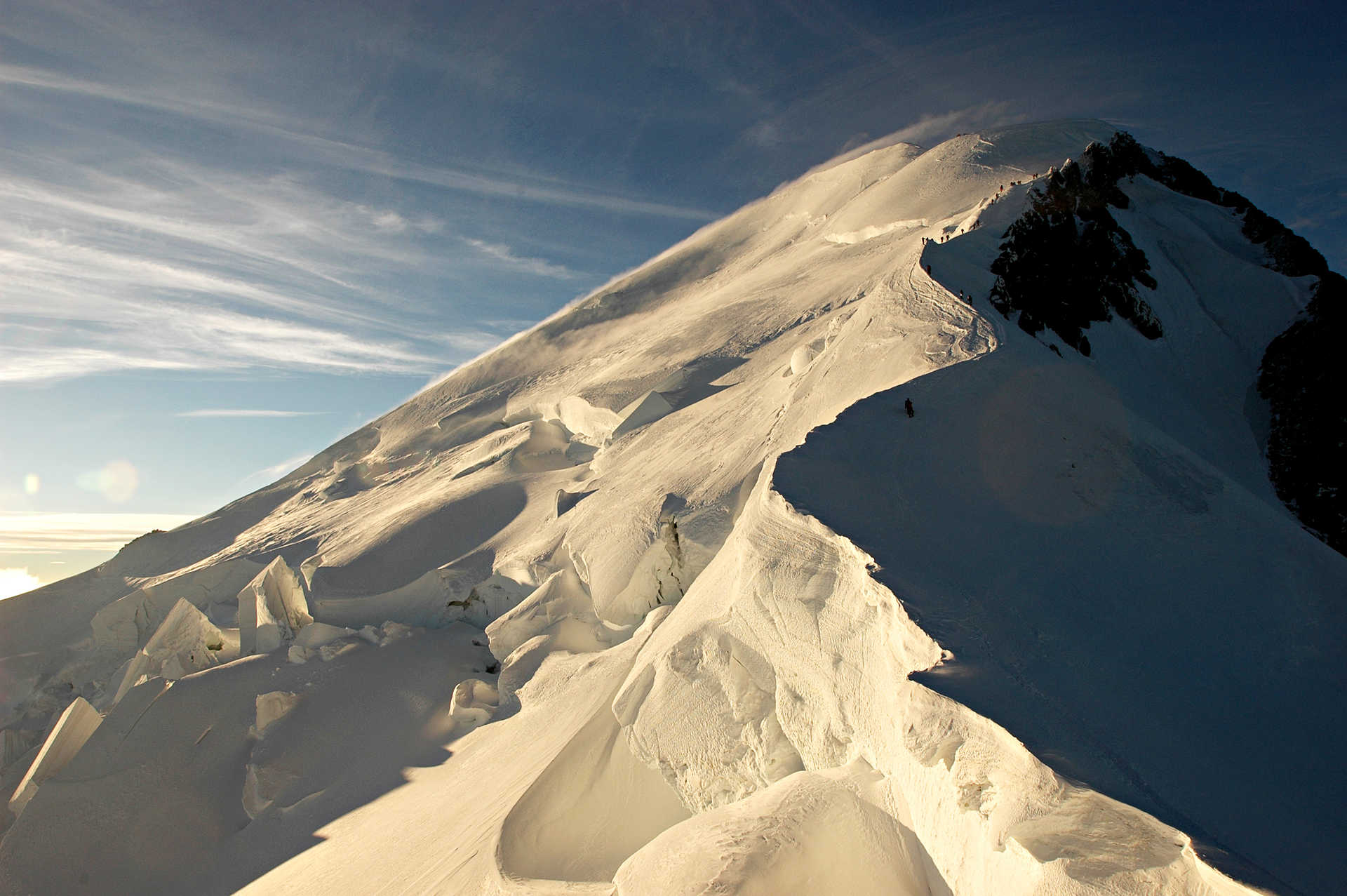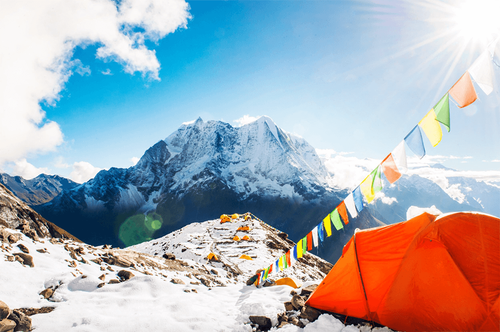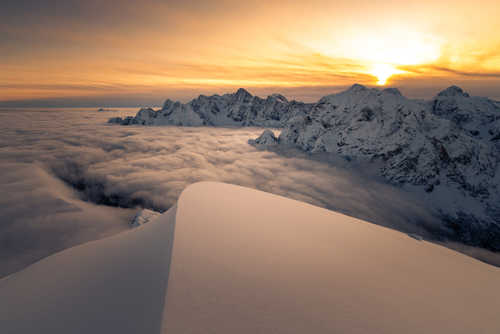The Alps are the largest mountain range in western Europe
and stretch for approximately 1200km through France, Switzerland, Italy, Liechtenstein,
Austria, Germany, Slovenia and Monaco. The highest peak in the range is Mont
Blanc (4810m) which sits on the border of France and Italy. The range contains
128 peaks over 4000m above sea level.
The Alps were formed tens of millions of years ago by the
collision of the African and Eurasian tectonic plates. Sedimentary rock from
the ocean floor was forced upwards to form the mountains we see today. Many of
the peaks are comprised of a mix of rock from Africa, Europe and the ocean
floor, mixed together as the land masses collided and folded over. The Alps are
often divided into two sections, the Western Alps and Eastern Alps, defined by the Splügen Pass on the Swiss-Italian border, together with the Rhine to the north and Lake Como in the south. The Western
Alps are higher while the Eastern range is much longer and broader.
The Alps are currently experiencing the effects of climate change at an alarming rate, with glaciers receding by tens of metres a year, causing huge rockfalls and landslides in the uppermost reaches. Permafrost tends to be found above 2,500m in the Alps; it runs deep into cracks in the rock, helping to hold them together. As this melts the rocks become unattached from one another and the mountainsides can become unstable. This is adding an extra dimension to those wishing to climb on Alpine peaks.
